Many things have changed in the five years since our last tour. In 2017, we were planning our fourth trek into Beaumont’s past when Hurricane Harvey devastated our area, and other events have occurred, such as tropical storm Imelda (2019), hurricanes Laura and Delta (2020), and a global pandemic to boot. We are still dealing with pandemic concerns, but things are slowly getting back to normal. As I write, our area’s business is in full swing, and many events are taking place to the satisfaction of those who have been couped up, hunkered down, and “Zoomed out.” They want to get out and regain some normalcy in their lives. We all do.
Earlier this summer, Magnolia Cemetery contacted me about possibly bringing back the tour. I also felt it was time to get back in the saddle, so to speak, and continue what we started back in 2014—but with a twist. Our newest incarnation of the tour will be christened The First Annual Historic Magnolia Cemetery Tour. Why the first, you ask? Here’s why: ever since I attended the Liberty County Historical Commission’s (LCHC’s) Whispers from the Past tour in 2013 and 2014, I have felt that this part of SETX needed something like this to bring its rich history to life—if not a reenactment-type tour, such as the LCHC beautifully performed, then a walking history tour of our hallowed grounds, which could be an excellent way of showing our history and teaching everyone how life was back then.
Our first cemetery tour, in 2014, was for the docents of the McFaddin-Ward House. In 2015 and 2016, we presented a tour sponsored by the Beaumont Heritage Society, which was a phenomenal success. In 2021, we want to bring to light a few things about one of the older cemeteries in Beaumont. Magnolia Cemetery is a not-for-profit cemetery, meaning it does not reap money from the people and families interred there. The aim of the tour is to promote the area’s history, show the beauty of the cemetery’s monuments, statues, and artwork, and tell the stories of those who are not so famous but contributed to Beaumont’s future.
This will be an annual fall event, but we hope to offer more educational tours throughout the year if there is a demand.
The tour is free to the public, and we hope to see you there.
The tour dates are as follows:
Thursday, October 21, 2021, 5:30 p.m.
Saturday, October 23, 2021, 10:00 a.m.
The Magnolia Cemetery tour is in its third year, and we’ve changed a few things. We have added an extra tour day for those who cannot attend during the week. (Both tours will be the same, so you don’t need to join us on both days.) We have also changed the times of the tours to 5:00 pm on a Thursday and 10:00 am on a Saturday. Hopefully these new times will better fit most attendee’s schedules.
All the participants are volunteers who share an interest in promoting our history. The tour is free and not linked to any formal organizations, although we gratefully acknowledge Magnolia Cemetery’s continued support in allowing us to promote SETX history on its hallowed ground. Judith Linsley (McFaddin-Ward House), and Paul Prosperie (Rediscoveringsetx.com) will be your tour guides for both days. Each tour is a single walking excursion, so whether one or 100 people show up, we will all walk together. Since this is a walking tour, please dress comfortably and be prepared to walk over the only rolling hills in Jefferson County.
The purpose of this tour is to promote the rich history of our area through the lived experiences of our past residents. There are many stories, mostly forgotten over time, that we feel need to be told and remembered. We hope you will enjoy this opportunity to look back on our SETX history and will share some of the stories about the people you will learn about on the tour.
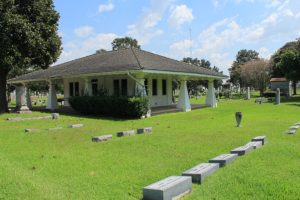 1 Magnolia Cemetery– William McFaddin, County Pioneer and Texas War for Independence Veteran, started a private graveyard for his family as well as relatives and friends on some of his land that rested on the highest knoll in Beaumont overlooking Brakes Bayou back in the 1840’s. The first recorded burial was made in 1847 when John D. Gilbert was laid to rest. The first recorded burial on the McFaddin plot was William’s son John Andrew McFaddin killed at the battle of Fordoche Louisiana during the Civil War on September 29, 1863.
1 Magnolia Cemetery– William McFaddin, County Pioneer and Texas War for Independence Veteran, started a private graveyard for his family as well as relatives and friends on some of his land that rested on the highest knoll in Beaumont overlooking Brakes Bayou back in the 1840’s. The first recorded burial was made in 1847 when John D. Gilbert was laid to rest. The first recorded burial on the McFaddin plot was William’s son John Andrew McFaddin killed at the battle of Fordoche Louisiana during the Civil War on September 29, 1863.
During the 1860’s another burial area adjacent to the McFaddins was marked for the Odd Fellows Lodge. Then once again shortly after the reconstruction of the South, William saw the need for another addition to the hill so that other Southeast Texans would have a place to bury their loved ones. He deeded two and a quarter acres of his land that was adjacent to his private graveyard to the town of Beaumont in 1876 and was used in the beginning primarily for civil war veterans and their families. Many people rest on the hill including another Texas War for Independence veteran, union soldier, deputy sheriff of Beaumont killed in the line of duty on September 25, 1881, and many victims of the Great Flu Epidemic of 1918.
In 1887 some of the prominent citizens of Beaumont gathered together to form a Corporation for benevolent and charitable purposes under the General Laws of the State of Texas. The purpose was “to purchase, improve and subdivide land and grounds for a private cemetery for the citizens of Beaumont and vicinity, and the future maintenance of the grounds by the sale of lots and otherwise as shall be the By- Laws prescribed.”
The Corporation was to have five Trustees as the Board of Trustees for the first year, with the five being named as Valintine Wiess, Edward L. Wilson, A.S. John, H.W. Smith and John L. Keith. The Corporation issued capital stock in the amount of ten thousand dollars, divided into four hundred shares of twenty-five dollars each. This Charter application was signed by E.L. Wilson, A.S John and V. Wiess. The Charter was approved by the Texas Secretary of State, August 3, 1887. The Trustees of the Company then went back to their friend William McFaddin to purchase an additional thirteen acres needed to start what is now known as Magnolia Cemetery.
In the years 1903 through 1906 the Corporation repurchased the stock sold, and began to operate as a Non Profit Organization. Then, under the leadership of V. Wiess, John N. Gilbert, P.H. Wiess, J.L. Keith and W.P.H. McFaddin, an amended charter was recorded May 9, 1924. The new charter states that the Corporation shall have no capital stock. Members of said Cemetery Corporation and stockholders therein shall have no financial interest in the assets of said Corporation. No dividend of any character shall ever be declared for the benefit of the members or stockholders. All income shall be used exclusively for the maintenance, upkeep, and improvements of the property and the purchase and improvement of additional property as required. As the years have passed Magnolia has continued to expand through land acquisitions from houses, schools, churches and one steel mill to meet the community’s needs.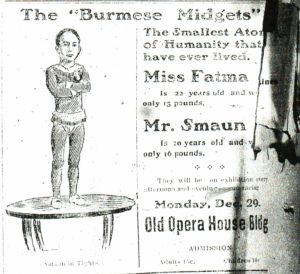
1 Fatma Sing Hpoo – Billed as the smallest person in the world, Fatma stood only 28 inches high and weighed a mere 15 pounds at 22 years old. She died suddenly at the Crosby Hotel while part of a sideshow on exhibition in Beaumont in December of 1902. A San Francisco newspaper reported her to be buried at Magnolia Cemetery in Beaumont, but there are no records of the location of her grave.
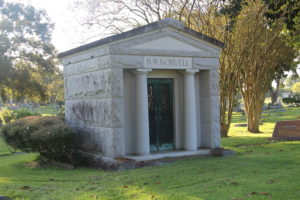 2 B. R. Norvell – In 1869, at age 13, B. R. began working as a slab trucker for the Adams-Milmo Lumber Company. He attended Professor Stovall’s college in 1884, then taught school for a short time. After owning his own sawmill and holding numerous managerial and treasurer jobs, he was elected president of the American National Bank in Beaumont in 1902, where he held this position until his death in 1928.
2 B. R. Norvell – In 1869, at age 13, B. R. began working as a slab trucker for the Adams-Milmo Lumber Company. He attended Professor Stovall’s college in 1884, then taught school for a short time. After owning his own sawmill and holding numerous managerial and treasurer jobs, he was elected president of the American National Bank in Beaumont in 1902, where he held this position until his death in 1928.
3 Chambers plot – Charles Homer and Edith Fuller Chambers and their daughters, Ruth and Florence, lived at 2240 Calder Avenue. Homer Chambers owned Chambers Hardware. Ruth and Florence never married, and after the death of their parents began investing in the stock market. Through this, they acquired enough money to start a foundation and turn their house into a museum.
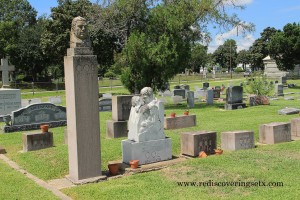 4 Coe plot – Sculptor Herring Coe carved tombstones for himself, his parents, his siblings, and their spouses. The carvings on the blocks represent each person’s unique interests or talents. Some of Herring’s other sculptures and carvings include the Dick Dowling monument at the battlefield in Sabine Pass, carvings on the Biology and Geology buildings at Lamar University in Beaumont, carvings on the 1931 Jefferson County Courthouse, and a memorial for the schoolchildren killed in an explosion in New London, Texas in 1937.
4 Coe plot – Sculptor Herring Coe carved tombstones for himself, his parents, his siblings, and their spouses. The carvings on the blocks represent each person’s unique interests or talents. Some of Herring’s other sculptures and carvings include the Dick Dowling monument at the battlefield in Sabine Pass, carvings on the Biology and Geology buildings at Lamar University in Beaumont, carvings on the 1931 Jefferson County Courthouse, and a memorial for the schoolchildren killed in an explosion in New London, Texas in 1937.
5 Florence Stratton – Born in Brazoria County in 1881, Florence moved to Beaumont in 1903. She was a newspaper reporter at both the Beaumont Journal and the Beaumont Enterprise. She is credited with starting both the Milk and Ice Fund (1914) and the Empty Stocking Fund (1920), charities of the Beaumont Journal. Florence authored The Story of Beaumont, published in 1923, which was the most successful of her five books. In 1929 Florence built her home at 1929 McFaddin Avenue, using plans from a New England cottage and brick from the 1892 Jefferson County courthouse. She also wrote a weekly column for the Beaumont Enterprise, under the pen name Susie Spindletop from 1926 until her death in January of 1938.
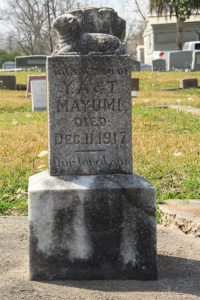 6 Child of Yasuo and Toshiko Mayumi – At the age of 18, Yasuo joined his older brother Yoshio in cultivating the Mayumi rice farm in Fannett. In the early years of the Mayumi colony, the residents of Fannett looked on the Japanese immigrants as suspicious characters, but quickly warmed up to the Mayumis’ friendliness and hospitality. In December of 1917 Toshiko bore her and Yasuo’s first child, but unfortunately the baby was born prematurely and lived for only one day. Neighbors aided Yasuo and Toshiko in the burial of their child at Magnolia Cemetery. Later Toshiko moved back to Japan while Yasuo stayed behind. The farm was sold in 1924, and Yasuo was the last to leave the area. This premature child is the only Mayumi descendant buried here.
6 Child of Yasuo and Toshiko Mayumi – At the age of 18, Yasuo joined his older brother Yoshio in cultivating the Mayumi rice farm in Fannett. In the early years of the Mayumi colony, the residents of Fannett looked on the Japanese immigrants as suspicious characters, but quickly warmed up to the Mayumis’ friendliness and hospitality. In December of 1917 Toshiko bore her and Yasuo’s first child, but unfortunately the baby was born prematurely and lived for only one day. Neighbors aided Yasuo and Toshiko in the burial of their child at Magnolia Cemetery. Later Toshiko moved back to Japan while Yasuo stayed behind. The farm was sold in 1924, and Yasuo was the last to leave the area. This premature child is the only Mayumi descendant buried here.
7 Lisheng Wen – This grave near the woods has an Asian roof design. The Chinese characters give the name of a man whose family name roughly translates as “three months village hall.” Nothing more is known of this stone until we can do a rubbing and translate more of the Chinese text.
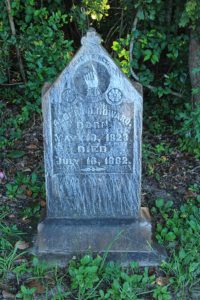 7 Albert D. Howard – This grave at the edge of the woods, dating from 1882, is one of the graves that preceded the establishment of Magnolia Cemetery. Albert, a farmer from Newton and a CSA veteran, was born on May 10, 1823 and died on July 16, 1882. From this location you can also see the original McFaddin plots directly to the north, on top of the hill, and the Independent Order of Odd Fellows cemetery to the northwest that formed the original Magnolia Cemetery.
7 Albert D. Howard – This grave at the edge of the woods, dating from 1882, is one of the graves that preceded the establishment of Magnolia Cemetery. Albert, a farmer from Newton and a CSA veteran, was born on May 10, 1823 and died on July 16, 1882. From this location you can also see the original McFaddin plots directly to the north, on top of the hill, and the Independent Order of Odd Fellows cemetery to the northwest that formed the original Magnolia Cemetery.
8 Confederate soldiers – On the top of the south side of the hill are two upright gravestones and one that is lying flat. They mark the passing of James A. Tiner (died 1869), Lewis Andrew Smith (died 1917), and George P. Abney (died 1918), respectively. The first two gravestones are memorials. The original burial sites of Tiner and Smith are unknown.
9 Van Wormer plot – At least two separate Van Wormer plots in the cemetery are marked by large monuments. This one contains the grave of S.H. Van Wormer, who owned a large tract of land south of the William McFaddin homestead (near Liberty street) known as “Van Wormer’s Pasture.” Downhill (to the east) from the Van Wormer monument, note the stone embedded in a tree indicating the tree’s age. There is another gravestone (what is probably a replacement marker) which reads, “Annie Lee Fitzenreiter, d. 1892.”
10 William Patterson – William was the Deputy City Marshal who tried to apprehend Patillo Higgins (later of Spindletop fame) in an act of vandalism in 1881. In the ensuing gun battle, Higgins was hit in the arm and later lost it, while Patterson died. Higgins was tried and acquitted. Patterson’s stone reads that he died of “a gunshot wound received . . . while in discharge of his duty.” His name comes first on the Beaumont Police Officers’ memorial.
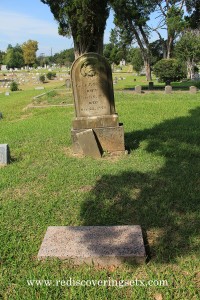 11 Andrew F. Smyth – Andrew left Alabama with a group of youths intending to meet up with the Red Rovers, a volunteer company formed to fight in the Texas Revolution. His troop was delayed in Nacogdoches, sparing them from the massacre, along with most of the Red Rovers at Goliad. Settling in Bevilport, near Jasper, Andrew made his living on the rivers of Southeast Texas. His riverboat, the Laura, navigated the Angelina and Neches rivers in the 1870s. He died while in Beaumont on a routine trip.
11 Andrew F. Smyth – Andrew left Alabama with a group of youths intending to meet up with the Red Rovers, a volunteer company formed to fight in the Texas Revolution. His troop was delayed in Nacogdoches, sparing them from the massacre, along with most of the Red Rovers at Goliad. Settling in Bevilport, near Jasper, Andrew made his living on the rivers of Southeast Texas. His riverboat, the Laura, navigated the Angelina and Neches rivers in the 1870s. He died while in Beaumont on a routine trip.
12 Wiess plot – This plot contains the descendants of Polish immigrant Simon Wiess and his wife Margaret Sturrock, a Scots immigrant. Simon Wiess began business in Beaumont, but later opened a store at Wiess Bluff on the Neches River above Beaumont. Two of Simon’s sons, William and Valentine, and their families are also buried here.
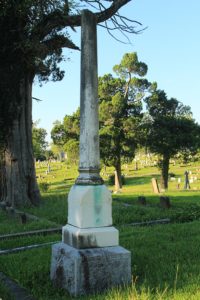 13 Chaison plot – Brandon Chaison was thrown from his horse and killed at the age of 21. His grieving family honored his memory with a large obelisk. Family tradition holds that he and Skipwith McFaddin, W. P. H. McFaddin’s daughter by his first marriage, were in love.
13 Chaison plot – Brandon Chaison was thrown from his horse and killed at the age of 21. His grieving family honored his memory with a large obelisk. Family tradition holds that he and Skipwith McFaddin, W. P. H. McFaddin’s daughter by his first marriage, were in love.
14 McFaddin-Kent-Ward plots – This is the burial site of William and Rachel McFaddin and their descendants, including the family of Drusilla McFaddin Kent. In 1876 William McFaddin donated 2½ acres of land for a public burial site, and in 1887 a group of Beaumont businessman bought 13 more acres and formed a corporation. The Ward plot holds John C. Ward’s family members; Ward’s son, Carrol Ward, married Mamie McFaddin in 1919.
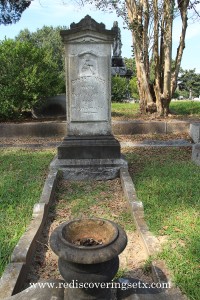 15 Robert Kidd – Robert lived to be 116 years old. Family tradition states that he farmed his land by himself until he was nearly 100. Nearby is the grave of his daughter Martha, who died at age 14.
15 Robert Kidd – Robert lived to be 116 years old. Family tradition states that he farmed his land by himself until he was nearly 100. Nearby is the grave of his daughter Martha, who died at age 14.
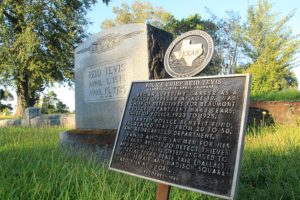 15 Reid Tevis – Reid began his career in law enforcement at age 19. He gained national fame for his ability to identify and capture thieves and pickpockets while they were working numerous state fairs. Among his accomplishments were starting the Police Benefit Fund, which raised money by having a rodeo each year, and increasing Beaumont’s police staff from 20 to 50. Reid was also Chief of Police from 1923 to January of 1925, until an illness forced him to step down. He died a few months later. According to the official record, there were 57 pallbearers and honorary pallbearers at his funeral, drawn from the multitudes of law enforcement agencies he had worked with.
15 Reid Tevis – Reid began his career in law enforcement at age 19. He gained national fame for his ability to identify and capture thieves and pickpockets while they were working numerous state fairs. Among his accomplishments were starting the Police Benefit Fund, which raised money by having a rodeo each year, and increasing Beaumont’s police staff from 20 to 50. Reid was also Chief of Police from 1923 to January of 1925, until an illness forced him to step down. He died a few months later. According to the official record, there were 57 pallbearers and honorary pallbearers at his funeral, drawn from the multitudes of law enforcement agencies he had worked with.
16 Ogden plot – This huge tree monument is surrounded by log sections. Lem and Ed Ogden and their families are buried here. Their father was Fredrick W. Ogden, the first lawyer in Beaumont.
17 A. N. Vaughan – A Confederate veteran, A.N. was also editor of the Beaumont Banner, Beaumont’s first newspaper.
18 W. A. Fletcher – W. A. was a Confederate veteran and later a prosperous lumberman. He wrote Rebel Private, Front and Rear, a memoir of his time in the Civil War.
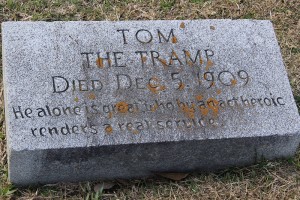 19 Tom the Tramp – Tom was an epileptic who saved two of J. Frank and Alice Keith’s daughters on the Bolivar Peninsula during the 1900 Galveston storm. The Keith family later gave him a house at their Voth sawmill; he died in 1909 when the house burned down after he kicked over a lantern during a seizure.
19 Tom the Tramp – Tom was an epileptic who saved two of J. Frank and Alice Keith’s daughters on the Bolivar Peninsula during the 1900 Galveston storm. The Keith family later gave him a house at their Voth sawmill; he died in 1909 when the house burned down after he kicked over a lantern during a seizure.
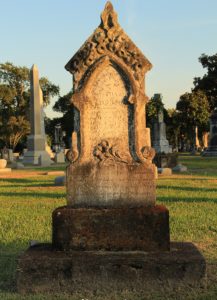 20 Miss Jack McDonough Memorial – This monument was erected in honor of Miss Jack McDonough, postmistress of Sabine Pass, who drowned in the 1886 hurricane that destroyed the city. Her body was never recovered.
20 Miss Jack McDonough Memorial – This monument was erected in honor of Miss Jack McDonough, postmistress of Sabine Pass, who drowned in the 1886 hurricane that destroyed the city. Her body was never recovered.
20 Firefighter’s plot – This pie-shaped plot provided burial sites for Beaumont’s firemen when the city had only a volunteer fire department.
21 Jeanette Catherina Stengele – Jeanette was a native of Germany (though some documents place her as Dutch) who came to this country in 1884. A milliner by trade, she learned her craft in Baltimore then moved to Beaumont. A single woman all her life, she gained wealth through her many business ventures. When Jeanette died in 1909, she left instructions to be buried in Magnolia Cemetery with the most elegant memorial money could buy. The statue of St. Catherine alone, which sits atop the mausoleum, cost $5,000 in 1909 (the equivalent of $100,000 today). The burial site takes up 12 grave plots.
21 Weaver plot – A. B. and Edith Weaver moved to Beaumont from Sabine Pass after the 1886 hurricane. A. B. was in the insurance and banking business. Their son, Ashley E. Weaver, is buried near them. Ashley was in the banking business and was president of the American National Bank in Beaumont for a time.
21 David French – Here are located the graves of David, son of John Jay French Sr., and his descendants. David married Amelia Guedry when she was barely 15 years old and reputedly spoke no English, only French.
22 Confederate plot – On January 11, 1905, the Board of Directors of Magnolia Cemetery voted to donate Lot 40 in Section F to the Albert Sydney Johnson Camp #75 of the United Confederate Veterans for burial of indigent Civil War veterans. 12 veterans are interred there.
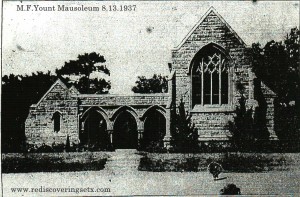 23 Yount plot – This is the burial site of Frank and Pansy Yount, their daughter Mildred, and their son-in-law E. D. Manion. Frank died in 1933; to house his remains, Pansy first built a huge granite-and-sandstone mausoleum costing $100,000. When she found out it would only last 600 years, she had it torn down and replaced it with a flat bronze coffin-sized plaque.
23 Yount plot – This is the burial site of Frank and Pansy Yount, their daughter Mildred, and their son-in-law E. D. Manion. Frank died in 1933; to house his remains, Pansy first built a huge granite-and-sandstone mausoleum costing $100,000. When she found out it would only last 600 years, she had it torn down and replaced it with a flat bronze coffin-sized plaque.
Inspired by the Liberty County Historical Commission’s “Whispers from the Past,” (a historic cemetery tour in which reenactors give life to those since passed and keep Liberty County’s heritage alive), I believe Jefferson County has a similar tale to tell. This county, like our neighbor SETX counties, has a rich history with many wonderful stories. And what better way to begin our journey than the residents of Magnolia Cemetery?
Our tour doesn’t yet have reenactors, but it does revisit the founding pioneers of our area. It also delves into the odd stories and fascinating events that involved citizens not among the historical elite. There are many hidden stories out there that history seems to forget, but through research and good old investigative work, we will try to render an accurate account of those that reside among the only rolling hills in Jefferson County, which is Magnolia Cemetery.
This is the second year of our tour, the first taking place in October 2014 for the docents of the Mcfaddin-Ward House. I could not go on without personally thanking Judith Linsley, historian and curator of interpretation and education at the Mcfaddin-Ward House. This tour would never have happened if it weren’t for her support and hard work. I also would like to thank Magnolia Cemetery employees for their enthusiastic helpfulness to make our tour a reality. I also can say the same about the Jefferson County Historical Commission and the Beaumont Heritage Society. I belong to both organizations and am thankful for all the support.
Printable PDF files for the tour and map are located on the links below:
MAGNOLIA CEMETERY TOUR 2015 Text
MAGNOLIA CEMETERY TOUR 10-19-15
Enter the south gate, drive to Stratton plot.
1. Stratton plot (on right at corner)—Florence Stratton was a Beaumont newspaper
reporter and author. In 1929, she built a home at 1929 McFaddin, using plans from a New England cottage and brick from the 1892 Jefferson County courthouse. Eunice Stevens, Florence’s niece, lived in the house after Florence’s death.
2. Coe plot (walk left on crossroad, plot is on right)—Sculptor Herring Coe carved tombstones for himself, his parents and siblings and their spouses. Carving on the blocks represents each person’s interests or talents.
3. Thomas Langham (return to crossroad, go north, plot is on left)—An early sheriff of Jefferson County, descendant of Biddle Langham, who came to Texas from Tennessee in 1836.
Return to crossroad. Turn right at Stratton plot corner, stop just before you get to the wooded boundary. The next two graves are on the left side of the road.
4. Grave near woods with Asian “roof” design—Chinese characters indicate that Lisheng Wen is buried here; his “family” name roughly translates as “three months village hall.”
5. Grave in edge of woods—Burial site of Albert D. Howard in 1882, one of the graves in the cemetery that preceded Magnolia Cemetery (b. May 10, 1823, d. July 16, 1882).
From this point, you can see the original McFaddin plots directly to the north, on top of the hill, and the IOOF cemetery to the northwest that formed the original Magnolia Cemetery.
Loop back around to the road that goes by the Stratton plot, head north. Turn left (west) on next road.
 6. Chambers plot (to right of road)—Charles Homer and Edith Fuller Chambers and their daughters Ruth and Florence. They lived at 2240 Calder Avenue, and Homer Chambers owned Chambers Hardware. Ruth and Florence never married and left their home as a museum.
6. Chambers plot (to right of road)—Charles Homer and Edith Fuller Chambers and their daughters Ruth and Florence. They lived at 2240 Calder Avenue, and Homer Chambers owned Chambers Hardware. Ruth and Florence never married and left their home as a museum.
Drive to main entrance, turn right (east), go all the way to the end, turn right (south), pass McFaddin plot, turn right onto next road.
South of road:
7. Confederate soldiers (on south edge of hill, 2 upright stones, 1 flat)—James A. Tiner
d. 1869, Lewis Andrew Smith d. 1917, George P. Abney d. 1918
8. Van Wormer plot—At least 2 separate Van Wormer plots in cemetery marked by large monuments—S.H. Van Wormer owned a large tract south of the William McFaddin homestead, known as “Van Wormer’s Pasture.” Downhill (to the east) from the Van Wormer monument, note the stone embedded in a tree, indicating the age of the tree. What is probably the replacement marker reads Annie Lee Fitzenreiter, d. 1892.
9. William E. Patterson—Deputy City Marshal who tried to apprehend Pattillo Higgins (later of Spindletop fame) in the act of vandalism in 1881. In the ensuing gun battle, Higgins was hit in the arm and later lost it, Patterson died. Higgins was tried and acquitted. Patterson’s stone reads that he died of “a gunshot wound received…while in discharge of his duty.”
10. Andrew F. Smyth—from Bevilport, near Jasper, he served in the Texas Revolution. His riverboat, the Laura, navigated the Angelina and Neches rivers in the 1870s. He died while in Beaumont on a routine trip.
North of road:
11. McFaddin-Kent-Ward plots—Burial site of William and Rachel McFaddin and descendants, including family of Drusilla McFaddin Kent. In 1876 William McFaddin 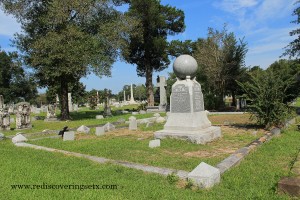 donated 2-1/2 acres of land for a public burial site; in 1887 a group of Beaumont businessmen bought 13 more acres and formed a corporation. The Ward plot holds John C. Ward family members; Ward’s son, Carroll Ward, married Mamie McFaddin in 1919.
donated 2-1/2 acres of land for a public burial site; in 1887 a group of Beaumont businessmen bought 13 more acres and formed a corporation. The Ward plot holds John C. Ward family members; Ward’s son, Carroll Ward, married Mamie McFaddin in 1919.
12. Caswell plot—Robert Kidd, who lived to be 116 years old, is buried here. Family tradition says that he farmed his land himself until he was nearly 100. Nearby is the grave of his daughter Martha, who died at 14.
13. Wiess plot—Descendants of Polish immigrant Simon Wiess and his wife Margaret Sturrock, a Scots immigrant. Simon began business in Beaumont but later opened a
store at Wiess Bluff on the Neches River above Beaumont. Two of Simon’s sons, William and Valentine and their families, are buried here.
14. Chaison plot—Brandon Chaison was thrown from his horse and killed at 21. His grieving family honored his memory with a large obelisque. Family tradition holds that he and Skipwith McFaddin, W.P.H. McFaddin’s daughter by his first marriage, were in love.
15. Carroll plot—George W. and Underhill Mixson Carroll graves. George was a pillar
of the Baptist community and a generous philanthropist, as well as a stockholder in the Gladys City Oil and Gas Company.
16. Gilbert and Fuller plots—Both Nathan Gilbert and Zachary Taylor Fuller were ancestors of Florence and Ruth Chambers. Gilbert came to Sabine Pass as a cotton agent for the Confederacy. Fuller was a respected Beaumont doctor who died suddenly after being bitten by a spider.
17. Ogden plot, huge tree trunk monument surrounded by “log” sections—Lem and Ed
Ogden and their families are buried here. Their father was Frederick W. Ogden, the first lawyer in Beaumont.
North of second road:
18. A.N. Vaughan—Confederate veteran and editor of the Beaumont Banner, Beaumont’s first newspaper.
19. Fletcher plot (one of two plots)—W.A. Fletcher, Confederate veteran and later a
prosperous lumberman. He wrote Rebel Private, Front and Rear, a memoir of his time in the Civil War.
20. Keith plot, Tom the Tramp stone—Tom, an epileptic, saved 2 of J. Frank and Alice Keith’s daughters, who were on Bolivar Peninsula during the 1900 Galveston storm. The Keith family later gave him a house at their Voth sawmill; he died in 1909 when the house burned after he kicked over a lantern during a seizure.
Drive west to main north-south connector, turn right, drive to flag.
21. Historical marker for Magnolia Cemetery—The Magnolia Cemetery Corporation was formed in 1887 by a group of Beaumont businessmen, who combined land from two private cemeteries—the McFaddin burial ground and the International Order of Oddfellows cemetery—with 13 acres of purchased land to create a public cemetery.
Southeast corner of intersection:
22. Firefighters’ plot—Pie-shaped plot that provided burial sites for Beaumont’s
firemen when there was only a volunteer fire department. At the back of the plot is a monument to
Miss Jesse McDonough, who drowned in the 1886 hurricane that destroyed Sabine Pass. The monument was erected by her brothers.
North side of main road near entrance:
23. David French plot—Graves of David, son of John Jay French (Sr.), and his descendants. David married Amelia Guedry when she was barely 15 and reputedly spoke no English, only French.
24. Jeanette Caterina Stengele grave—native of Germany who became a U.S. citizen in 1898 at Beaumont. The statue is of St. Catherine. Stengele, a milliner who never married, lived and worked in Beaumont, then moved to California. When she died in
1909, she left instructions to be buried in Beaumont with the most elegant memorial her money ($38,000) could buy. The statue is of St. Catherine and the site takes up 12 grave plots. Near Stengele’s grave is the gravestone of Ashley and Edith Eugenia Weaver, notable because it is in the shape of a boulder. Their son
Ashley was a Beaumont banker.
Drive out main gate, turn left, make quick right into cemetery section on west side of Pine.
25. Yount plot—Burial site of Frank and Pansy Yount, their daughter Mildred and son-in-law E.D. Manion. Frank died in 1933; to house his remains, Pansy first built a huge granite-and-sandstone mausoleum costing $100,000. When she found out it would only last about 600 years, she had it torn down and replaced with a flat bronze coffin-sized plaque.

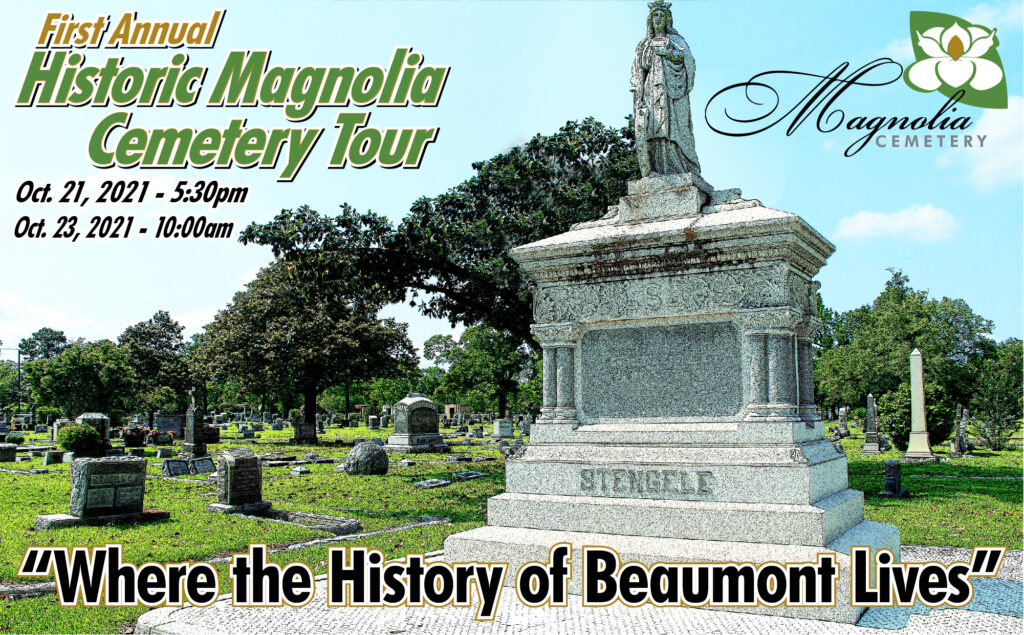
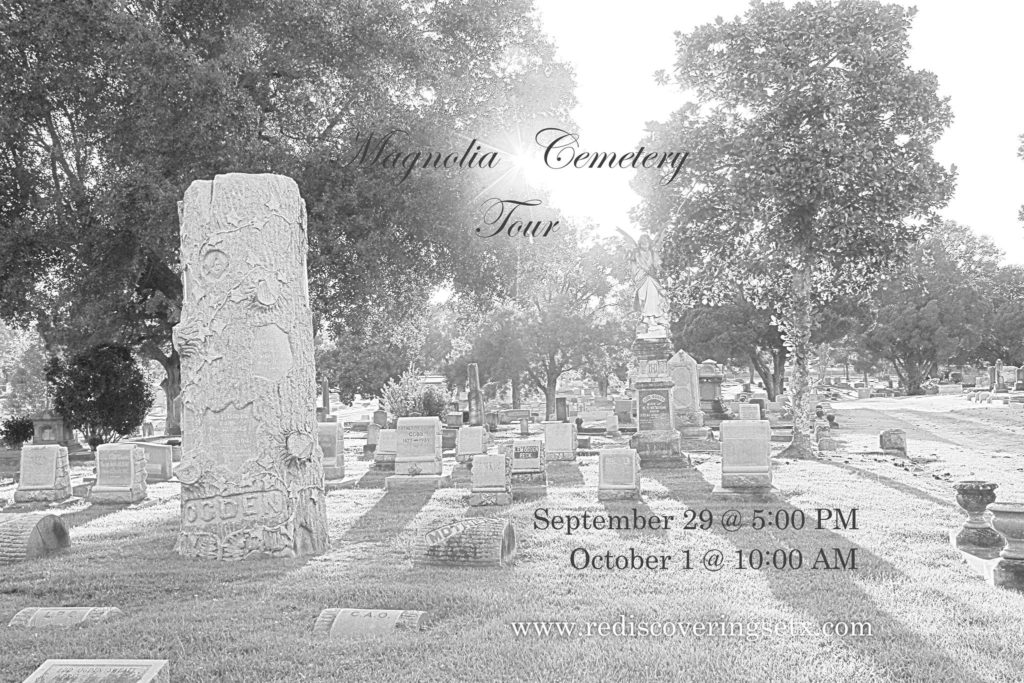
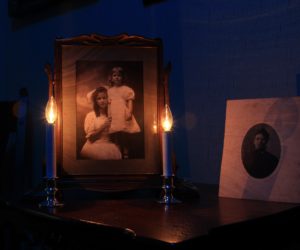
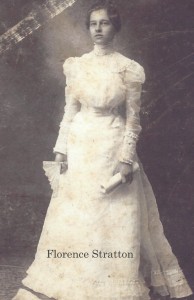
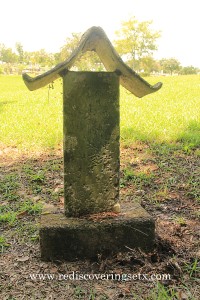
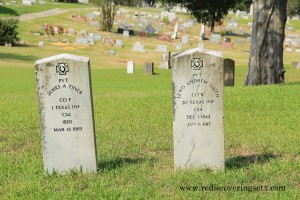
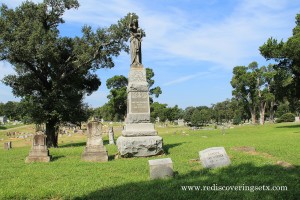
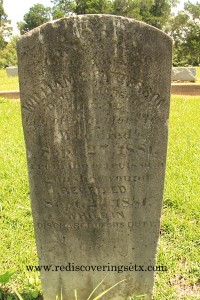
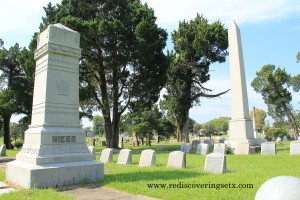
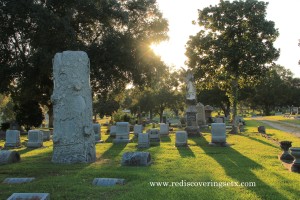
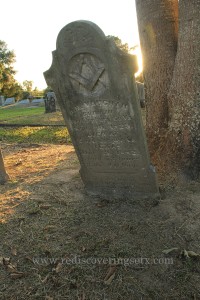
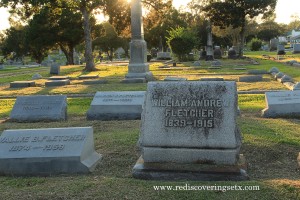
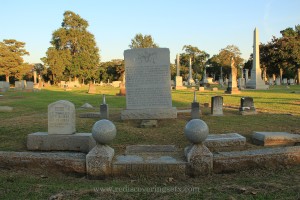
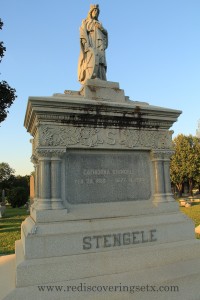
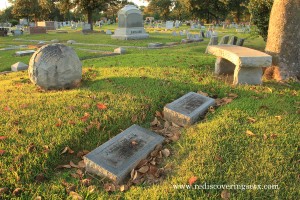
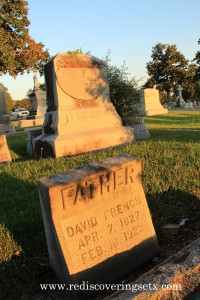
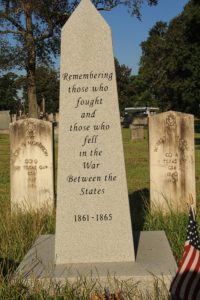
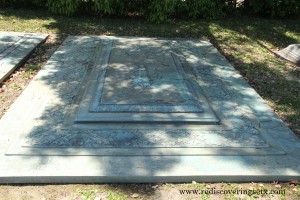
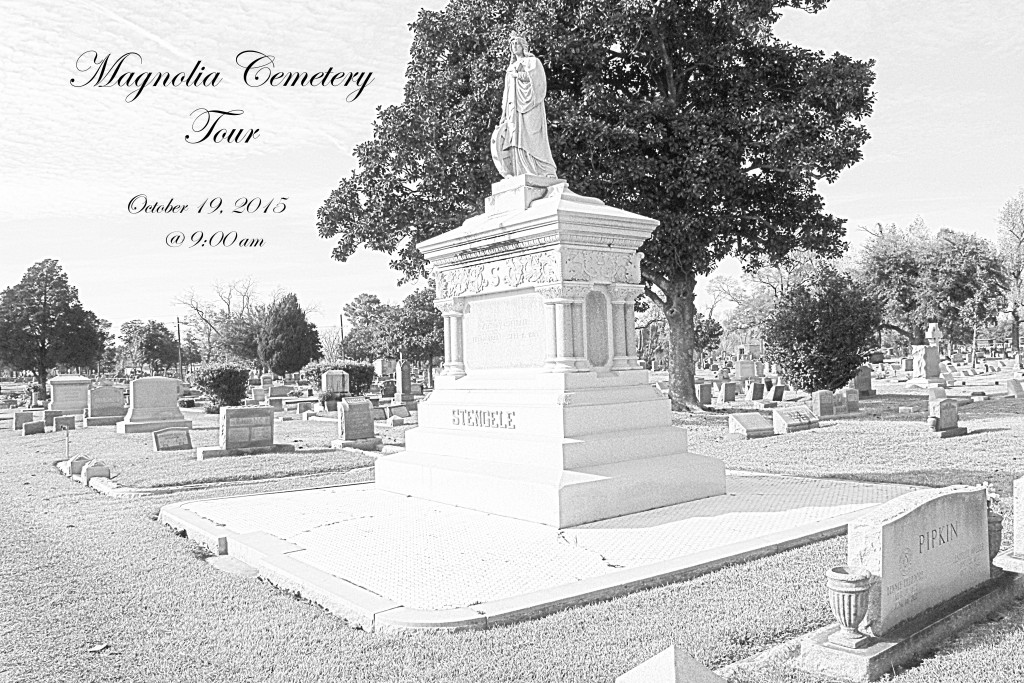
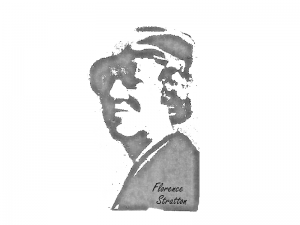
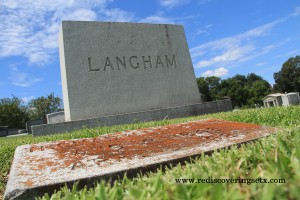
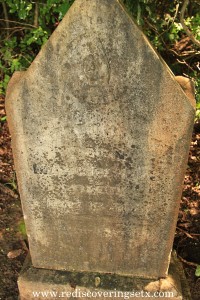
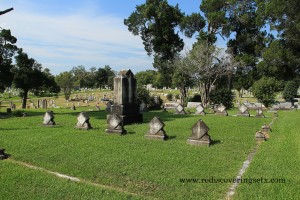
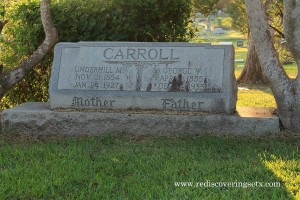
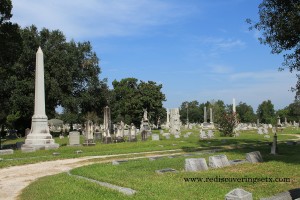
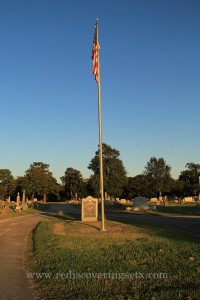
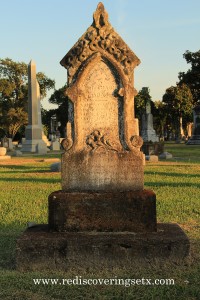
You must be logged in to post a comment.